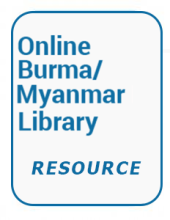Land Library
Welcome to the Land Portal Library. Explore our vast collection of open-access resources (over 74,000) including reports, journal articles, research papers, peer-reviewed publications, legal documents, videos and much more.
/ library resources
Showing items 1 through 9 of 35.Myanmar has a total land area of 676,577 sq km with a population of 57.50 million. Total net sown area is 11.67 ml ha with the cropping intensity of 157.1%. Forest cover, 33.44 ml ha accounted for nearly half of Myanmar's land area.
BURMA
LANDMINE
ISSUE
2009: UN Security Council - act now!...Understand us...KNU LANDMINE POLICY...Mine incidents rise...Landmine deaths double...Pizza-oven helps
Abstract: "While international humanitarian access in Burma has opened up
over the past decade and a half, the ongoing debate regarding the appropriate
relationship between politics and humanitarian assistance remains unresolved.
Abstract: "Burmese refugees in Thailand maintain economic, social and
political links with their country of origin, but these transnational activities
are influenced by the politics and level of development of the country of
Mine Ban Treaty status:
Not a State Party...
Use:
Government and NSAG use continued in 2007 and 2008....
Stockpile:
Unknown...
Contamination:
Antipersonnel and antivehicle mines, ERW...
Estimated area of contamination:
In the last twenty years in real estate appraisal there has been a growing interest for new and reliable assessment techniques essentially through the introduction of pluriparametric estimate, in particular of linear regression.
Ensemble classification is an emerging approach to land cover mapping whereby the final classification output is a result of a consensus of classifiers. Intuitively, an ensemble system should consist of base classifiers which are diverse i.e.
The article makes an attempt to answer the question: how direct payments affected the land market in Poland? The first part of the article explains the theoretical aspects of direct payments as an instrument of agricultural policy and their prospective effectiveness.
Collective actions groups have many advantages and are sometimes essential, yet they can reinforce or perpetuate inter-and intra-gender inequalities when their functioning is left entirely subject to internal community dynamics and they are not well managed.


